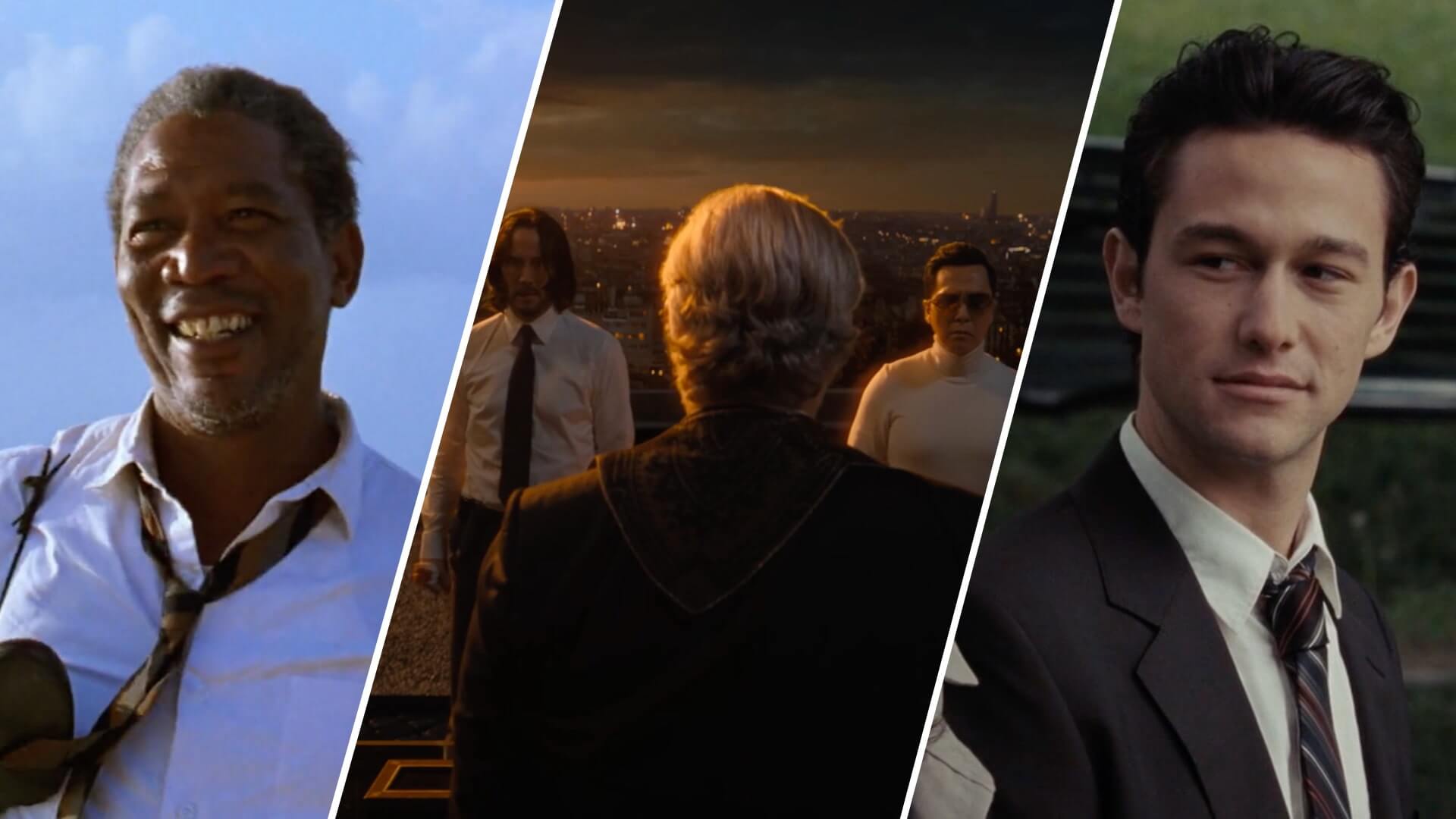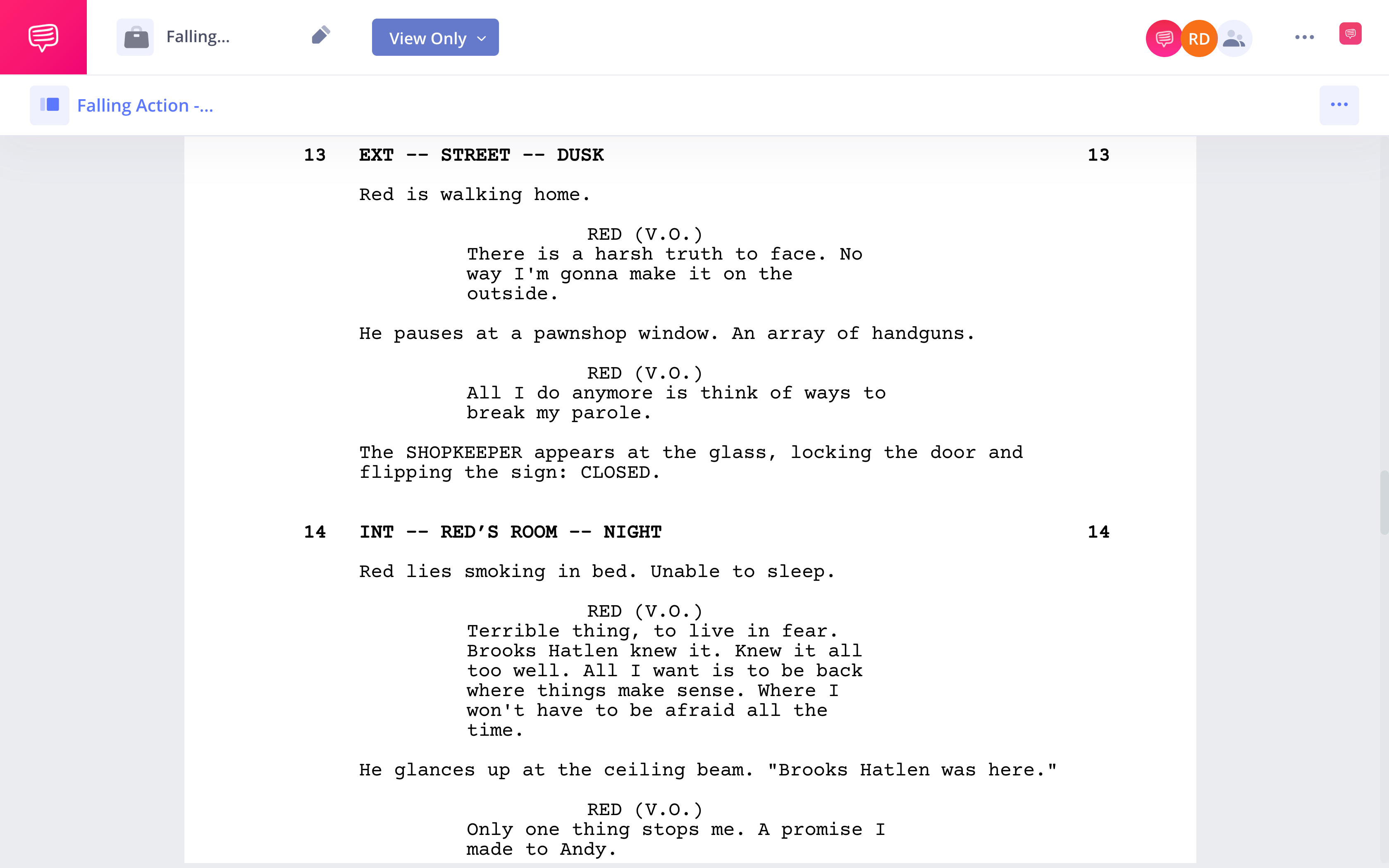Narrative structure is like a backbone that holds every piece of a story together. One of the lesser-discussed yet crucial components of this structure is the falling action. In this article, we will dive into the concept of falling action, its role in Freytag’s Pyramid, its importance in storytelling, and provide examples for a thorough understanding. Due to the nature of falling action within plot structure, there are spoilers ahead.
What is the Falling Action of a Story?
First, let’s define falling action
Before we analyze the concept of Freytag's Pyramid, let's delve into a specific element of this model — the falling action — and understand the falling action definition and significance in storytelling.
FALLING ACTION DEFINITION
What is the falling action of a story?
In storytelling, the falling action serves as a crucial transition from the peak intensity of the climax to the calm resolution at the end. It's like the calm after the storm, where the dust begins to settle, and the characters start to grapple with the aftermath of the climactic turn of events.
The falling action encompasses the sequence of events that occur after the climax, which is the turning point or the highest point of tension in the story. This is where the main conflict or problem that has been driving the plot starts to unravel and move towards a resolution. The characters might begin to understand the implications of their actions during the climax, or they may start to mend relationships, solve mysteries, or overcome personal challenges.
It's worth noting that while the falling action might seem less exciting compared to the climax, it's essential for a satisfying narrative. With it, the story would feel smooth and complete. The falling action allows the story to wrap up smoothly and logically, leading up to a coherent and fulfilling conclusion.
What is the falling action used for?
- Transition between the climax and the resolution
- Decrease the tension in the story
- Resolution of conflict
- Tying up loose ends in story
Falling Action Meaning in Story
Falling action in Freytag's Pyramid
Falling action, in the context of Freytag's Pyramid, marks the onset of the story's end. It's part of the story structure where events and complications start to resolve, leading to the final resolution or denouement. This segment of the narrative is characterized by a reduction in tension and pace, providing an essential counterbalance to the heightened drama of the climax.

Freytag's Pyramid
In concrete terms, falling action might involve the protagonist's reaction to the climax's events, the consequences they have to deal with, or the steps they take towards resolution. This could include mending relationships that were strained during the story, addressing any remaining mysteries, or dealing with personal growth or transformation brought about by the story's events.
To sum up, the falling action in Freytag's Pyramid serves as a critical transition stage between the climax and resolution.
It paves the way for a satisfying conclusion by resolving the main conflict and reducing the story's tension. As such, it plays a vital role in delivering a compelling and well-structured narrative.
Related Posts
What is the Falling Action Used for in Story?
Importance of Falling Action
The falling action segment of a narrative is not just a transition phase but a pivotal element that contributes significantly to the overall impact and understanding of the story. Let's delve into its importance:
Providing Closure and Resolution
One of the main functions of the falling action is to guide the story towards its conclusion. It is during this phase that the main conflicts or problems start to resolve, providing a sense of closure.
The characters may come to realizations, solve mysteries, or mend relationships, all of which lead to a satisfying end to the story. Without the falling action, the narrative might feel abrupt or incomplete, leaving readers with unanswered questions or loose ends.
A prime example is The Shawshank Redemption. After the climax where Andy escapes from prison, the falling action follows Red's journey to reunite with Andy in Zihuatanejo, Mexico.
The Shawshank Redemption • Falling action examples
This sequence resolves both characters' struggles for freedom and hope, effectively providing closure to the audience. Without the falling action, the narrative would feel incomplete, highlighting its importance in creating a satisfying story conclusion.
Let's see how this sequence was written in the script. Click the image below to read a portion of Frank Darabont's script that we've imported into StudioBinder's screenwriting software.
The Shawshank Redemption • Falling action examples
Reducing Tension and Pacing
After the high-intensity climax, the falling action provides a necessary decrease in tension and pacing. This 'cooling down' period is essential for maintaining a balanced narrative structure. It gives both the characters and the readers a chance to catch their breath, process the events of the climax, and prepare for the story's resolution.
Falling action examples can be found in literature as well. A notable example can be observed in George Orwell's 1984. After the climax where Winston Smith is tortured into betraying Julia, the falling action follows Winston's release from the Ministry of Love.
After Winston's intense torture scenes in 1984, the story slows down as he rejoins society, loyal to Big Brother. This eases tension and lets readers digest the climax and its themes of power, control, and resistance.
Enhancing Character Development
The falling action can play a significant role in highlighting character development within a narrative. It's during this phase that characters come to terms with the events of the climax, offering readers a chance to witness their changes, growth, or transformations. This deepens the connection between the readers and the characters, making the story more engaging and relatable.
A great example of this can be seen in the film 500 Days of Summer.
In one key scene, Tom and Summer sit on a bench that overlooks the city. This scene happens after Tom's expectations about his relationship with Summer are shattered and he picks himself up out of depression.
(500) Days of Summer • Falling action examples
During their conversation on the bench, Tom experiences a profound moment of self-realization. This scene not only ties up loose ends but also demonstrates how both characters have evolved over the course of the story.
This moment in 500 Days of Summer is a powerful illustration of how the falling action can be used to underscore character development, enhancing the overall narrative and deepening the audience's understanding and connection with the characters.
Affecting Reader's Experience and Understanding
Lastly, the falling action plays a critical role in shaping the reader's experience and understanding of the story. It allows for reflection on the story's events and themes, and sets the stage for the final message or moral.
By resolving conflicts and reducing tension, this part of the story ensures that readers leave the story with understanding and a sense of closure.
Falling action in plot structure is a critical part of any narrative that follows the climax and leads toward the resolution. It serves to deflate the tension built up in the story and provides an opportunity for character development and plot resolution.
By effectively utilizing this technique, writers can guide their narrative smoothly toward a satisfying end, thus enhancing the overall reader experience. Understanding and mastering this aspect of storytelling is key to creating engaging and well-structured narratives.
Up Next
What is Denouement?
After understanding the significance of falling action in a narrative, let's transition into our next topic and unravel the intricacies of the denouement.

